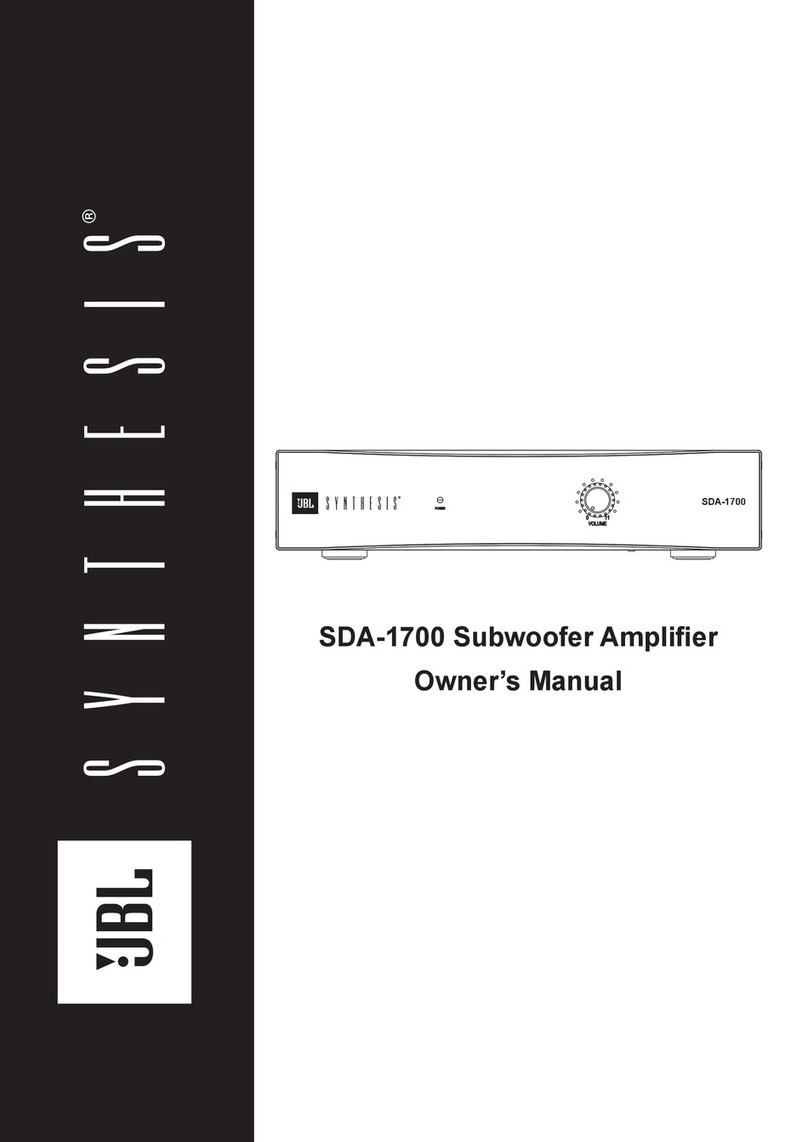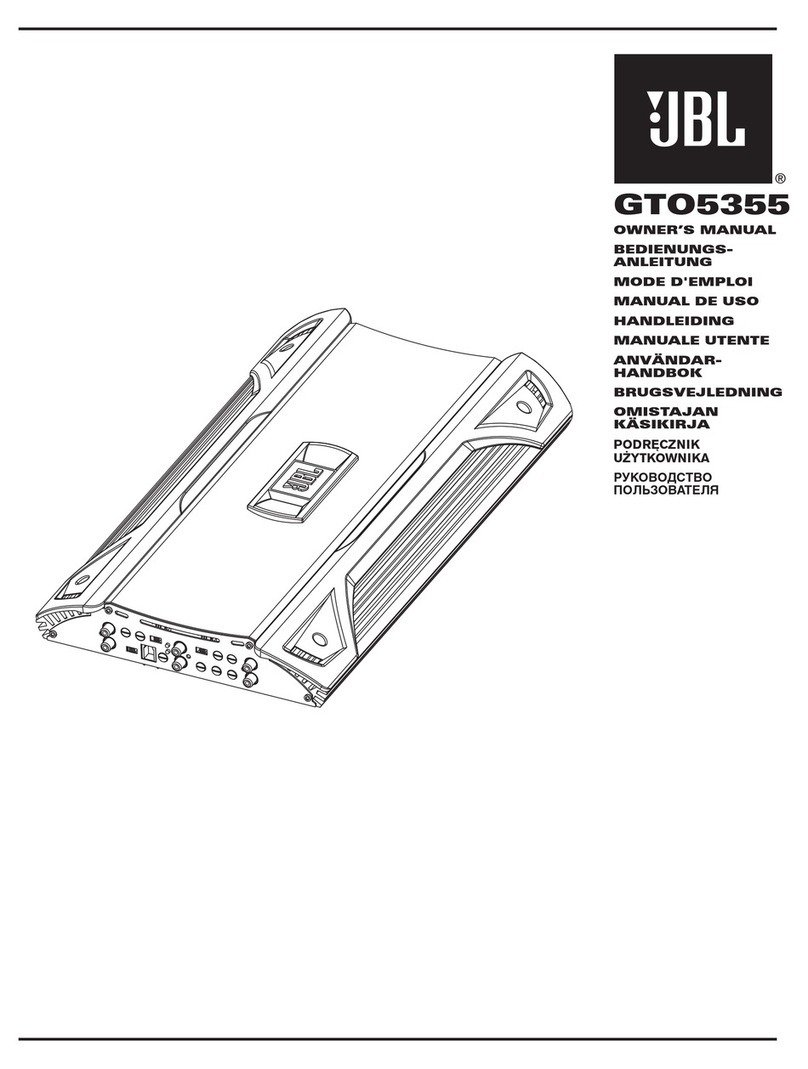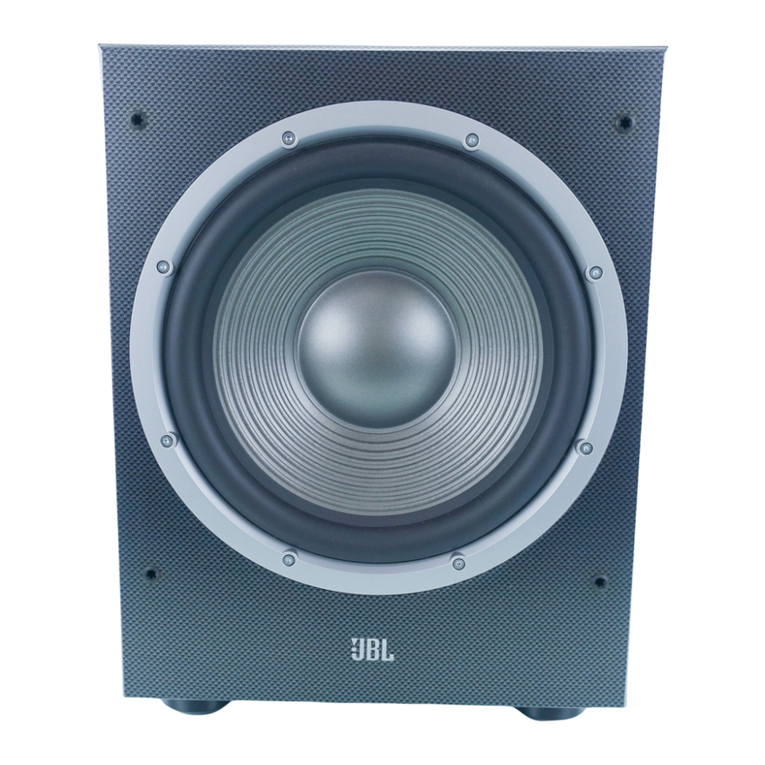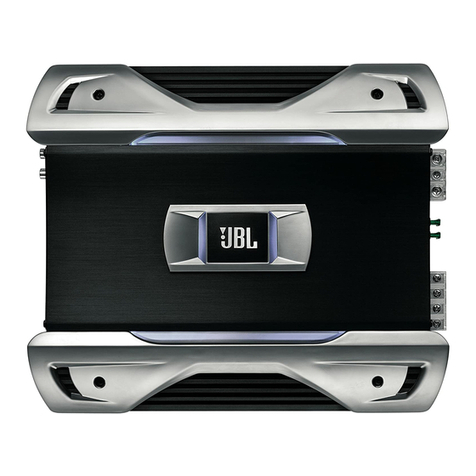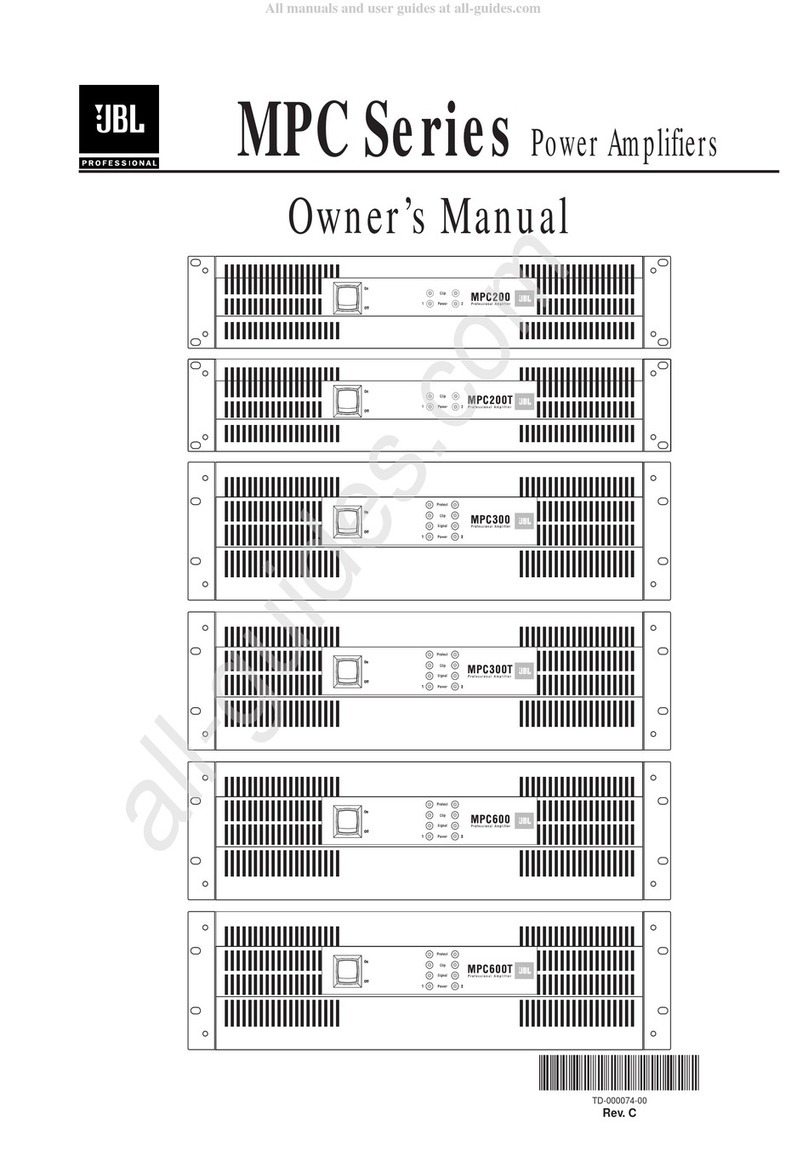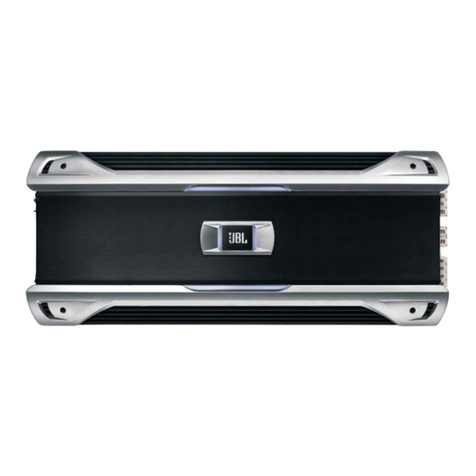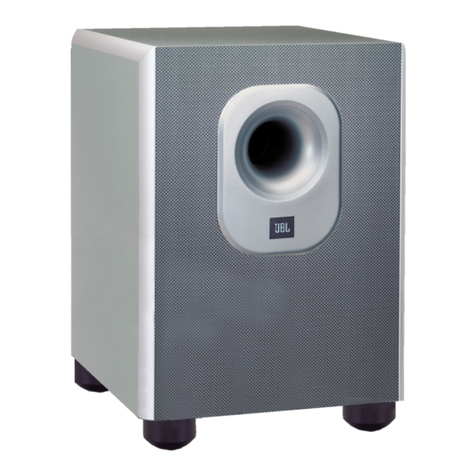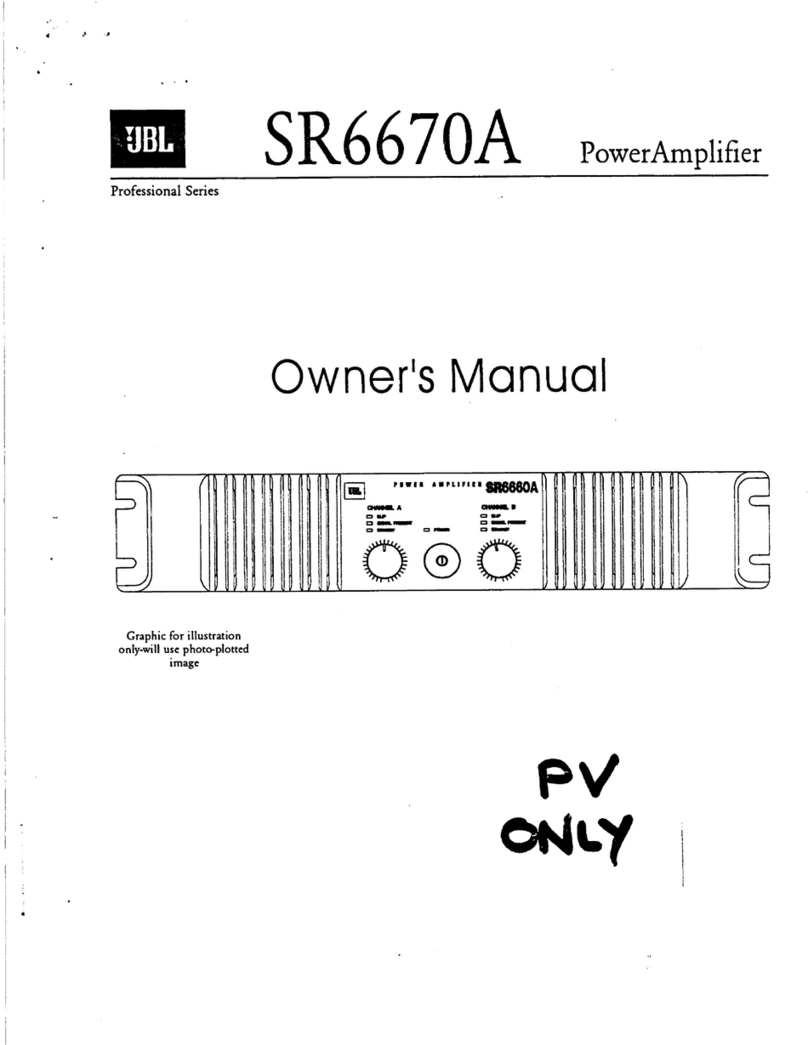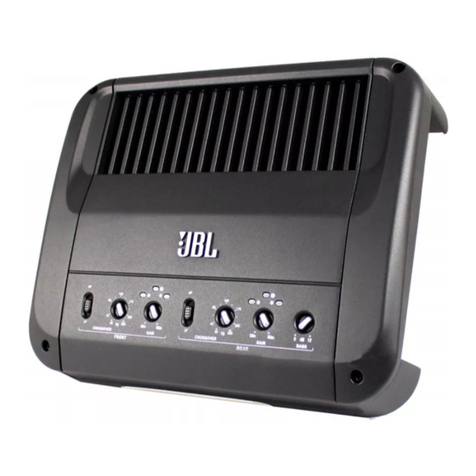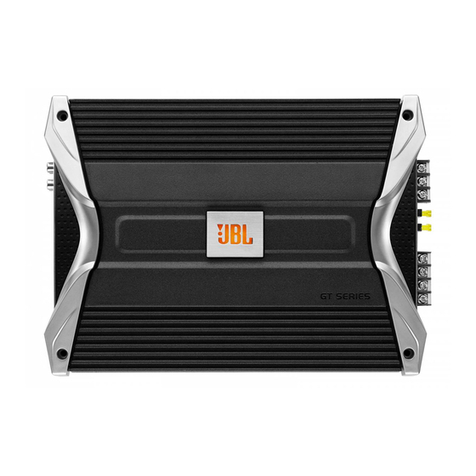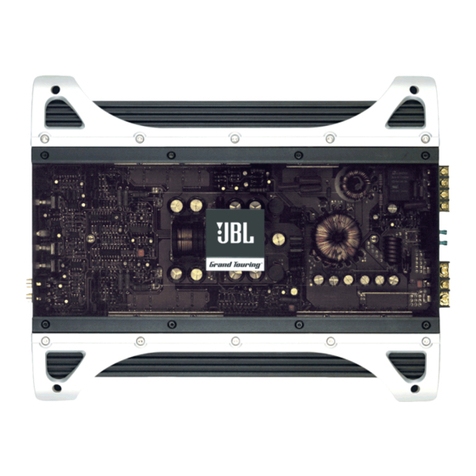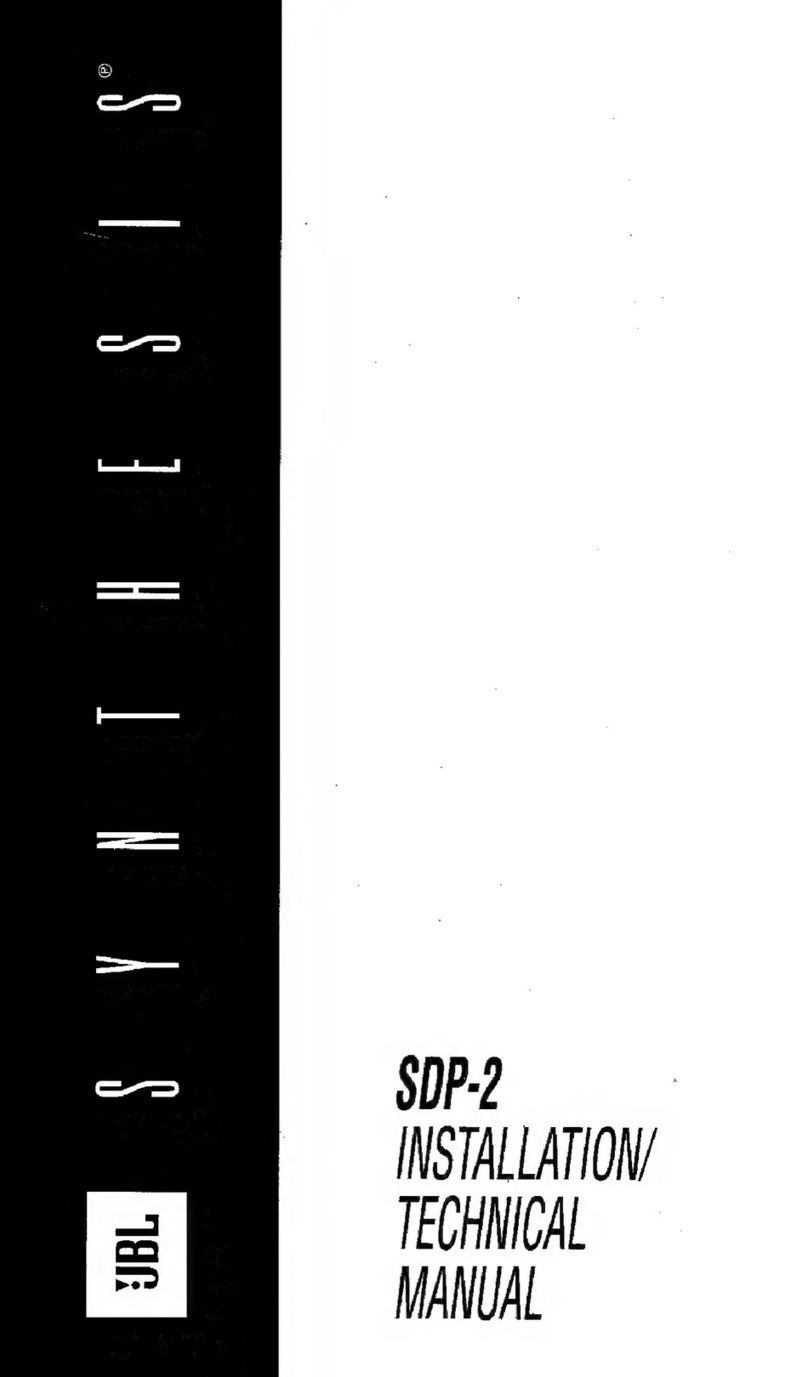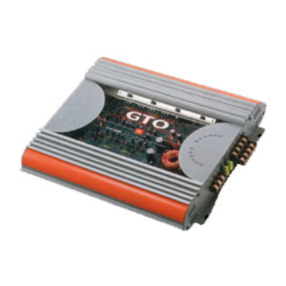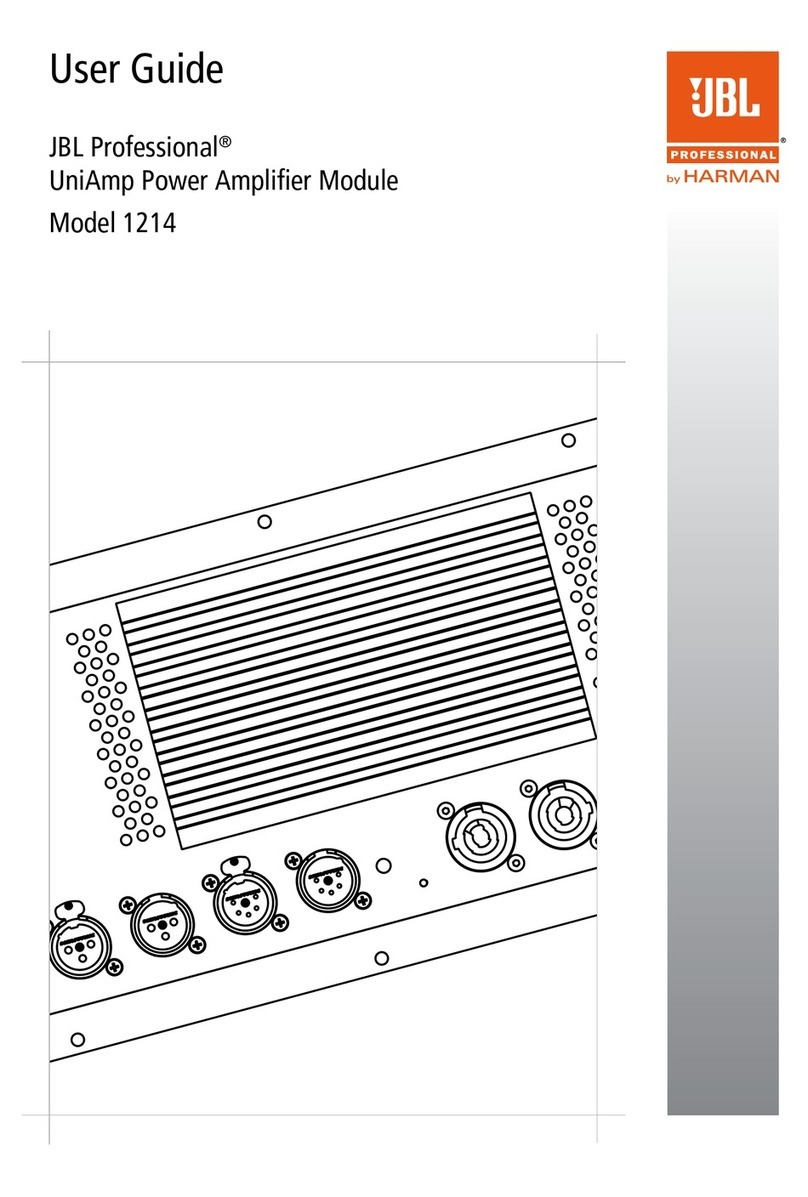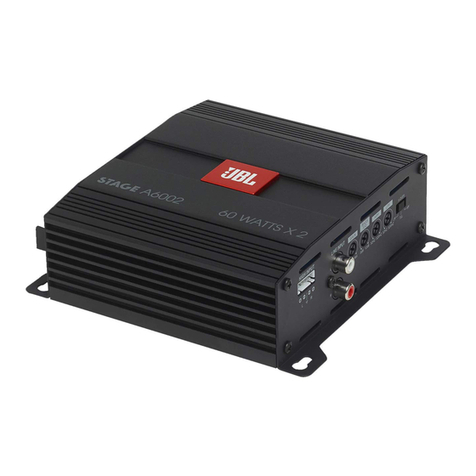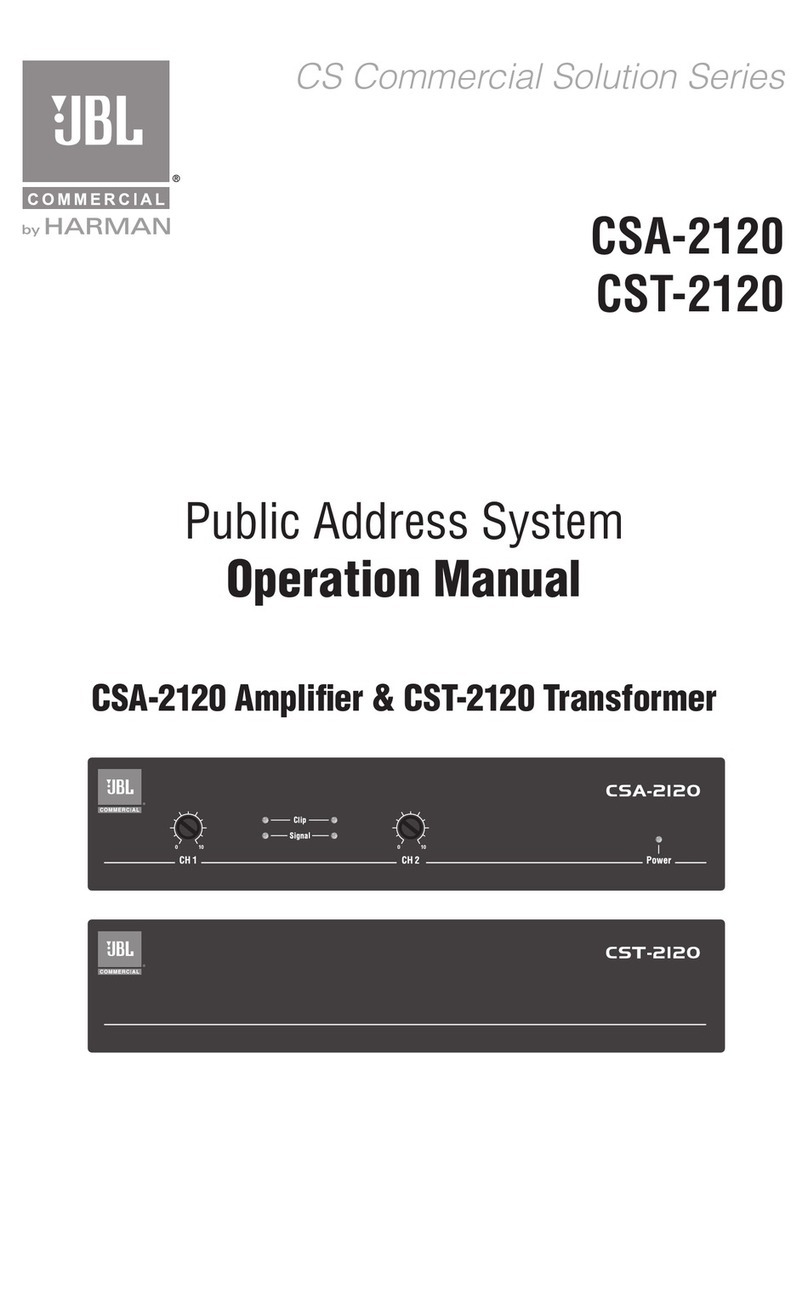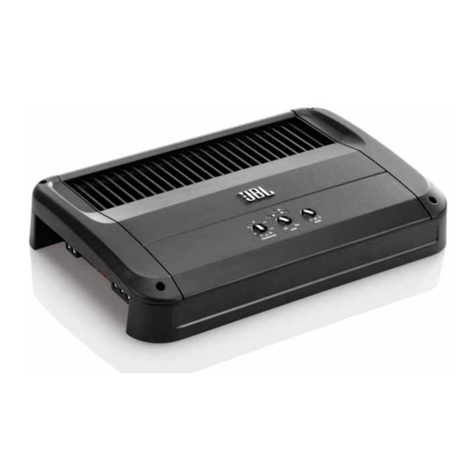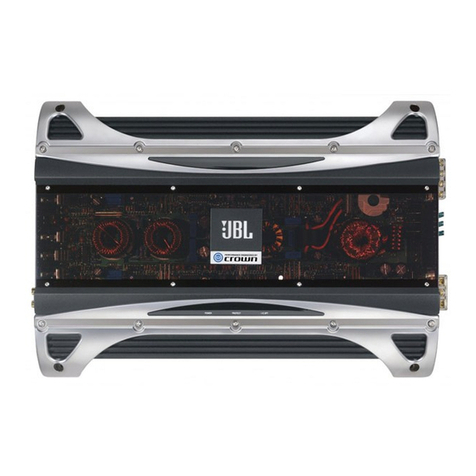
3
www.jbl.com
English
a SPEAKER OUTPUT CONNECTORS
• Connect the speakers to these terminals, observing proper polarity.
• Four-channel operation: Connect the front left speaker to the
Front L+ and L– terminals, and the front right speaker to the
Front R+ and R– terminals. Repeat for rear speakers, using the
Rear L+ and L– terminals and the Rear R+ and R– terminals.
• Three-channel operation: Connect the stereo speakers to the
Front terminals, as above. Connect the single speaker into
which the amplifier’s rear channels will be bridged to the Rear
R+ and Rear L– terminals.
• Two-channel (bridged) operation: Connect one speaker to the
Front R+ and Front L– terminals. Connect the other speaker to
the Rear R+ and Rear L– terminals.
• Minimum speaker impedance for stereo operation is 2 ohms.
Minimum speaker impedance for bridged operation is 4 ohms.
b FUSES
• Replace only with the same type and rating.
c POWER INPUT CONNECTORS
• +12V: Connect to the positive terminal of the vehicle’s battery.
8 AWG wire is recommended. Install an appropriate fuse holder
and fuse (40A minimum) within 18" (460mm) of the battery. Make
sure the wire is not damaged or pinched during installation.
Install protective grommets when routing wires through the
firewall or other sheet metal.
• GND: Connect to the vehicle’s chassis. Refer to the picture below.
Factory Bolt Ring Connector
Ground Wire
Note: Remove any paint
below ring connector.
Star Washer
• REM: Connect to the “Remote Out” lead from the source unit or
to a source of switched 12V+ (ACC).
d AUX OUTPUT CONNECTORS (RCA)
• Summed, nonfiltered pass-through output. Front right and rear
right inputs are combined and sent to the right AUX output. Front
left and rear left inputs are combined and sent to the left AUX
output. Connect to the input of an additional subwoofer amplifier.
e FRONT INPUT CONNECTORS (RCA)
• Connect to the front RCA outputs from the source unit or signal
processor.
f FRONT INPUT-LEVEL CONTROL
• Used to match the front input level of the amplifier to the output
level of the source unit.
• See p for the adjustment procedure.
g FRONT CROSSOVER-FREQUENCY CONTROL
• 12dB/octave crossover, variable from 32Hz to 320Hz.
• See q for the adjustment procedure.
h FRONT CROSSOVER-FILTER SELECTOR
• LP (SUB): Select for subwoofer(s).
• FLAT: Select for full-range speakers when no subwoofer will be
used in the system.
• HP: Select for midrange speakers or full-range speakers when a
subwoofer is used in the system.
i POWER ON LED
• Illuminated when the amplifier is on.
j PROTECT LED
• Illuminated under any of the following fault conditions: battery
over/under voltage, short circuit in speaker wires, amplifier is too
hot, amplifier’s output circuit has failed (DC voltage present in
the amplifier’s output).
k REAR BASS-BOOST CONTROL
• Provides up to 6dB of boost at 50Hz. Set the Bass-Boost control
according to your preference, being careful not to apply enough
boost to damage the speaker(s).
l REAR CROSSOVER-FREQUENCY CONTROL
• 12dB/octave crossover, variable from 32Hz to 320Hz.
• See adjustment procedure in q.
m REAR CROSSOVER-FILTER SELECTOR
• LP (SUB): Select for subwoofer(s).
• FLAT: Select for full-range speakers when no subwoofer will be
used in the system.
• HP: Select for midrange speakers or full-range speakers when a
subwoofer is used in the system.
n REAR INPUT-LEVEL CONTROL
• Used to match the rear input level of the amplifier to the output
level of the source unit.
• See p for the adjustment procedure.
o REAR INPUT CONNECTORS (RCA)
• Connect to rear RCA outputs from the source unit or signal
processor.
p SETTING THE INPUT LEVEL
A Turn Input-Level control counterclockwise to 6V (minimum).
B With a dynamic music track playing, turn the head unit’s
volume control to the 3/4 position.
C Turn Front Input-Level control clockwise until the music is so
loud that it no longer sounds clear (distortion is present in the
output).
D Turn Front Input-Level control counterclockwise gradually, just
until the music sounds clear once again.
E Front-level input is now adjusted correctly.
F Adjust Rear Input-Level control so that the level of the rear
speakers is proportionate to the level of the front speakers,
according to your preference.
q SETTING THE CROSSOVER
A Crossover setting for 5" (127mm) or larger full-range speakers
when no subwoofer is included in the system.
B Crossover setting for midrange and/or full-range speakers
when a subwoofer is included in the system.
C Crossover setting for subwoofers.
Note: Acceptable frequency ranges are indicated in gray.
This product is designed for mobile applications and is not intended for
connection to the mains.
A valid serial number is required for warranty coverage.
GT-X646 Car auDIO POwer aMPlIFIer Owner’s Manual
